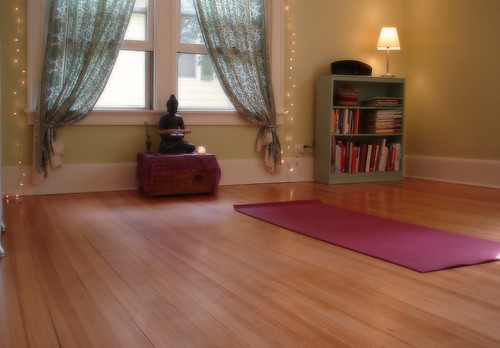It's getting cold out there and as the weather changes I can feel the transition happening in my body as well. I'm going a bit slower, drinking hot liquids and sleeping more. The end of November-particularly in areas with a pronounced four seasons - is an excellent time to make a seasonal shift in eating, lifestyle and yoga. Here are some suggestions and ideas to make the transitions a little smoother and more comfortable.
Foods
Shift from cold, raw foods such as salads and smoothies to foods that warm the body; soups, stews and roasted root vegetables. Incorporate pungent foods and herbs in your diet. herbs includes ginger, garlic, black pepper, crushed red pepper, cinnamon, cloves, turmeric, horseradish, and rosemary. Pungent foods include turnips, broccoli, daikon, celery, kohlrabi, mustard greens, kale, and green cabbage. I also like Dave Winston's ginseng soup when your under the weather
Pungent foods produce the following benefits necessary for good health in the winter:
- Increases warmth and stimulates the body
- Stimulate circulation of blood and energy
- Keep the lungs clear and open
- Dries phlegm mucous, and congestion
- Balances fluids
- Improve sluggish liver function
- Relieves some types of arthritis
Practice pranayama breathing once a day. I suggest three part durga breath, kapalabhati, and Surya Bhedana (Right Nostril Breathing) " Seventy percent of the body’s wastes are processed through the breath. Most people get one-quarter to one-fifth of the amount of oxygen the lungs were designed to hold. That’s a major deficit for cells that are trying desperately to process food, release toxins and provide energy for all your body’s needs. Without enough oxygen your cells are suffocating, can’t process food properly, are filled with sludge and toxins, and you run out of energy."
- Keep your muscles warm, wear extra layers.
- Start you practice with Surya Namaskar (Sun Salutations). This will help you keep warm, flexible and increase your energy as well as keep your body stretched and nimble.
- Stretch that spine with with both feet apart, hands above your head
- Practice standing Yoga poses such as Trikonasana (Triangle Pose), Tadasana (Mountain Pose), Utthita Trikonasana (Reversed Triangle Pose)
- sitting poses such as Paschimottanasana (Seated Forward Bend)
- inverted postures like Viparita Karani (Legs Up the Wall, Inverted Pose), prone poses such as Bhujangasana (Cobra Pose), Chakrasana (Wheel Pose), Dhanurasana (Bow Pose) and Shalabhasana (Locust Pose).
Conserve your energy to preserve good health. Slow down and get more rest. The body renews and restores when it's at rest and living creatures need more sleep during transitions, so extra time napping , going to bed earlier or sleeping later will help increase your bodies immune system, creating a stronger system to fight cold and flu season. So, curl up with a good book, sit by the fire sipping something hot and don't forget to dress warmly.




